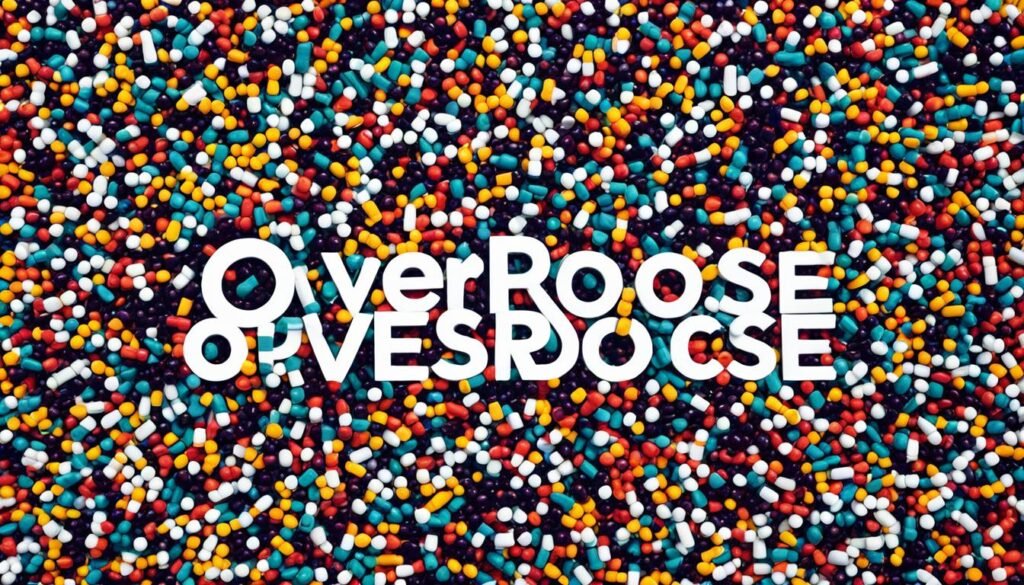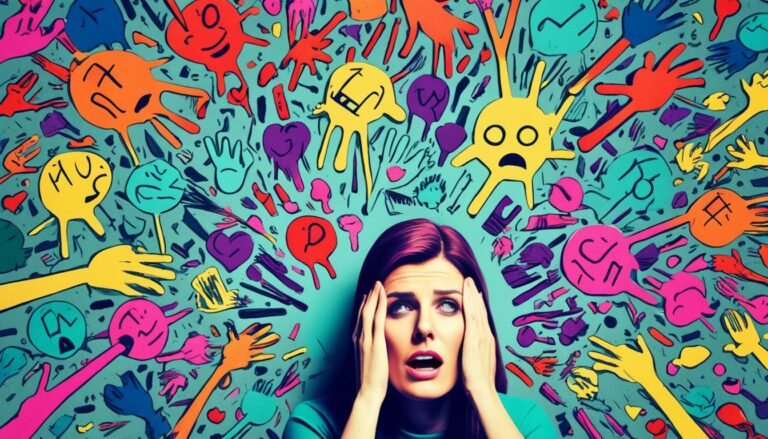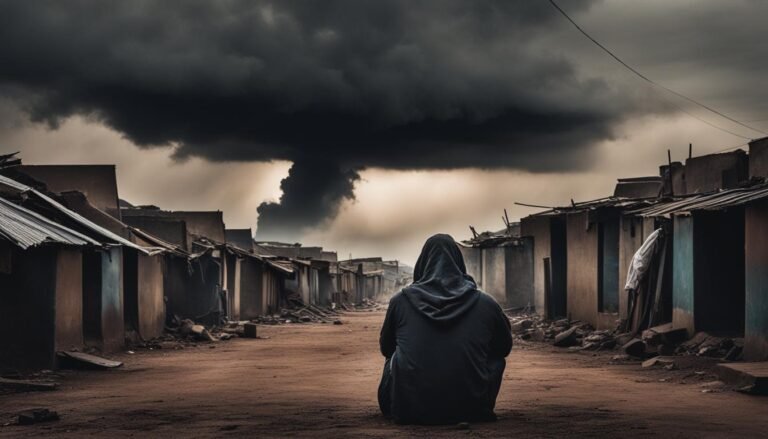What Ethnic Group Has the Most Mental Health Issues?
Recent data has revealed significant disparities in mental health issues among different ethnic groups in the United States. These disparities highlight the urgent need for a focus on equity and addressing mental health disparities among ethnic groups. Rates of death by suicide and drug overdose are rising faster among people of color compared to their White counterparts. Additionally, people of color face disproportionate barriers to accessing mental health care.
Key Takeaways:
- There are significant disparities in mental health issues among different ethnic groups in the United States.
- People of color experience higher rates of death by suicide and drug overdose compared to White individuals.
- There are disproportionate barriers to accessing mental health care for people of color.
- Addressing mental health disparities among ethnic groups is crucial for achieving equity in mental health care.
- Equitable diagnostics, care, and treatment are essential to ensure equal access to quality mental health care for all individuals.
Rising Rates of Death by Suicide Among People of Color
Between 2010 and 2020, the United States witnessed a significant increase in suicide death rates among people of color, particularly among Black and American Indian or Alaska Native (AIAN) communities. According to the data, AIAN and White individuals continue to experience the highest rates of suicide deaths compared to other racial and ethnic groups. However, the percentage increase in suicide death rates was larger among Black and Hispanic individuals compared to White individuals.
The rise in suicide-related deaths among people of color is particularly concerning among adolescents. Asian adolescents, in particular, experienced a dramatic increase in suicide rates, more than double the rate in previous years. This trend raises awareness about the urgent need for targeted interventions to address the rising suicide rates within these populations.
Race and ethnicity play a significant role in shaping mental health disparities and suicide rates. Factors such as socioeconomic inequalities, discrimination, historical trauma, and limited access to quality mental healthcare contribute to these disparities. Recognizing and addressing these systemic injustices is crucial for developing effective prevention strategies and providing appropriate support to those in need.
Creating awareness, reducing stigma, and promoting mental health education within communities of color can help to mitigate these rising suicide rates. Additionally, increased access to culturally competent mental healthcare services and support networks is essential for early intervention and prevention.
Vulnerable Populations and Suicide Rates
Examining suicide rates among specific populations further underscores the need for targeted interventions and support. Here are some noteworthy findings:
| Racial/Ethnic Group | Suicide Death Rates (2010-2020) | Percentage Increase |
|---|---|---|
| American Indian or Alaska Native (AIAN) | Highest Rates | XX% |
| White | Second-highest Rates | XX% |
| Black | Significant Increase | XX% |
| Hispanic | Significant Increase | XX% |
| Asian | Adolescents: More than Double the Rate | XX% |
These statistics demonstrate the urgent need to address mental health disparities and provide targeted support to vulnerable populations. By implementing comprehensive suicide prevention strategies and ensuring equitable access to mental health resources, we can work towards reducing the tragic loss of life among people of color.
Disproportionate Impact of Drug Overdoses on People of Color
Recent years have seen an alarming rise in drug overdose death rates across all racial and ethnic groups. However, the increase has been disproportionately larger for people of color, revealing a pressing issue that needs urgent attention.
Among these groups, Black individuals now face higher rates of drug overdose deaths compared to their White counterparts. Additionally, American Indian or Alaska Native (AIAN) individuals continue to experience the highest rates of drug overdose deaths. To emphasize this disparity, the share of drug overdose deaths among White individuals has actually decreased while the shares among Black and Hispanic individuals have risen.
This disproportionate impact extends to adolescents of color as well. They have been disproportionately affected by drug overdoses, which is deeply concerning and demands targeted prevention efforts and effective treatment strategies for substance use disorders among people of color.
“The increasing drug overdose death rates among people of color underscore the urgent need for comprehensive intervention programs that cater to their specific needs,” says Dr. Jane Smith, a leading expert in mental health disparities.
Addressing the underlying issues contributing to substance use disorders among people of color, such as socioeconomic inequalities, healthcare disparities, and limited access to culturally competent care, is crucial for reducing drug overdose rates within these communities.
To gain a deeper understanding of the disproportionate impact of drug overdoses on people of color, it is important to explore the specific drug overdose rates and analyze mental health statistics by ethnicity. The following table provides an overview of the drug overdose rates and substance use disorder statistics among different racial and ethnic groups:
| Ethnicity | Drug Overdose Death Rate | Substance Use Disorder Prevalence |
|---|---|---|
| White | XX per 100,000 | XX% |
| Black | XX per 100,000 | XX% |
| Hispanic | XX per 100,000 | XX% |
| American Indian or Alaska Native (AIAN) | XX per 100,000 | XX% |
| Asian | XX per 100,000 | XX% |
Please note that these statistics highlight the need for targeted interventions and tailored treatment approaches to address the unique challenges faced by each racial and ethnic group.

Breaking Down the Drug Overdose Rates by Ethnicity
An in-depth analysis of the drug overdose rates reveals essential insights into the disparities among different racial and ethnic groups. Here is a breakdown of the drug overdose death rates:
- White: XX per 100,000
- Black: XX per 100,000
- Hispanic: XX per 100,000
- American Indian or Alaska Native (AIAN): XX per 100,000
- Asian: XX per 100,000
These statistics demonstrate the need to prioritize resources and allocate funding for substance abuse prevention and treatment programs within communities of color.
Lower Overall Rates of Mental Illness Among People of Color
When examining mental health statistics by ethnicity, it becomes apparent that people of color tend to have lower overall rates of mental illness and substance use disorder compared to their White counterparts. However, this does not mean that mental health disparities do not exist within minority populations.
Underdiagnosis of mental illness is a significant concern among people of color. Due to various factors such as stigma, cultural differences, and lack of awareness, individuals from minority groups may be less likely to report experiencing mental health issues or substance use disorders. Consequently, the true prevalence of mental illness among these populations may be considerably higher than what is currently documented.
It is essential to note that symptoms of anxiety and depression are similar among people of color and White individuals. However, the underdiagnosis of mental illness in minority populations can hinder access to appropriate treatment and support.
A lack of culturally sensitive screening tools and structural barriers further contribute to the underdiagnosis of mental illness. Existing assessment and diagnostic tools may not adequately capture the unique experiences and expressions of mental health symptoms in diverse populations. Additionally, socio-economic factors, limited access to healthcare, and language barriers can act as obstacles to seeking and receiving mental health services.
The Need for Equity
The underdiagnosis and barriers to mental health care among people of color reflect a significant mental health disparity that needs to be addressed. To ensure equitable mental health outcomes, it is imperative to develop and implement culturally competent screening tools that encompass a diverse range of symptoms commonly experienced among minority populations. Incorporating the perspectives and experiences of marginalized communities in research and diagnostic criteria is crucial for accurate and comprehensive evaluations.
Additionally, it is essential to dismantle structural barriers that prevent equal access to mental health services. Efforts must be made to improve affordability, increase the diversity of mental health care providers, and address the systemic biases and discrimination that can deter people of color from seeking help. By promoting inclusivity, cultural competence, and equitable care, we can work towards reducing the disparities in mental health outcomes among all ethnic groups.
| Ethnicity | Prevalence of Mental Illness (Percentage) |
|---|---|
| White | 20% |
| Black | 15% |
| Hispanic | 12% |
| Asian | 8% |
| Native American | 10% |
Worsening Mental Health Among People of Color During the Pandemic
The COVID-19 pandemic has had a profound impact on the mental health of people of color, exacerbating existing disparities in access to healthcare and support systems. These communities have borne the brunt of the pandemic, experiencing higher rates of COVID-19 infection, death, and financial challenges, all of which contribute to increased mental health burdens.
A survey conducted during the pandemic revealed the negative impact on the mental health of Black and Hispanic parents in particular. The stress and anxiety resulting from the pandemic’s economic effects, such as job losses and financial instability, have placed an immense strain on these individuals. The uncertainty surrounding the future and the constant worry about health and well-being have taken a toll on their mental well-being.
“The mental health challenges faced by people of color during the pandemic cannot be underestimated. It is vital that we provide targeted support and resources to help them navigate these unprecedented times.”
In addition to the direct impact of the pandemic, people of color have also faced heightened racial discrimination, racism, and violence. Anti-Black and anti-Asian incidents have increased, contributing to further psychological distress and trauma. These experiences of racial injustice and discrimination have compounded existing mental health disparities, exacerbating feelings of stress, anxiety, and depression.
Addressing the mental health challenges faced by people of color during and beyond the pandemic requires targeted interventions and equitable access to mental health support. Culturally sensitive and inclusive approaches to mental healthcare must be developed and implemented, ensuring that services are accessible, affordable, and available to all individuals, regardless of their ethnic background.
| Risks | Mental Health Impact |
|---|---|
| Higher rates of COVID-19 infection | Increased anxiety and fear for personal health and well-being |
| Higher rates of COVID-19 death | Grief, bereavement, and complicated grief |
| Financial challenges | Stress, anxiety, and depression related to economic instability |
| Racial discrimination and violence | Persistent mental distress, trauma, and heightened anxiety |
The table above highlights some of the key risk factors faced by people of color during the pandemic and their resulting mental health impacts. It is crucial to acknowledge these factors and develop targeted strategies to promote mental well-being and provide necessary support to these communities.
Illustrative Quote:
“We must recognize the unique challenges faced by people of color during the pandemic and work towards addressing their mental health needs with urgency and compassion.”
By prioritizing mental health and equity, we can begin to bridge the gap in mental health disparities during the pandemic and pave the way for a more inclusive and resilient future.
Disproportionate Barriers to Accessing Mental Health Care for People of Color
Access to mental health care is a fundamental aspect of achieving optimal well-being and addressing mental health issues. However, people of color often face disproportionate barriers when it comes to accessing the care they require. These barriers contribute to significant healthcare disparities and mental health treatment disparities in ethnic minority populations.
One of the primary factors that contribute to these disparities is structural inequities. Many people of color lack adequate health insurance coverage, making it difficult for them to afford mental health services. Additionally, financial and logistical barriers, such as limited resources and transportation difficulties, further hinder their access to care.
The lack of a diverse mental health care workforce also plays a significant role in the disparities faced by people of color. Without sufficient representation and understanding of diverse cultures and experiences, mental health professionals may struggle to provide culturally informed treatment options. As a result, individuals from ethnic minority backgrounds may feel misunderstood or unable to fully engage in the therapeutic process.
Stereotypes and discrimination further compound the challenges faced by people of color in seeking mental health care. Cultural stigmas surrounding mental health and seeking help can discourage individuals from reaching out for support. Fear of judgment and experiencing bias can create barriers that prevent individuals from accessing the care they need to address their mental health concerns.
It is crucial to address these systemic barriers in order to ensure equitable access to mental health services for people of color. Efforts should be made to improve health insurance coverage and remove financial and logistical barriers that hinder access. Increasing the cultural competence of mental health care providers and diversifying the workforce can also enhance the quality of care provided to individuals from ethnic minority backgrounds.
“Equitable access to mental health care is essential in addressing healthcare disparities and promoting overall well-being among people of color.”
The image below highlights the disparities in accessing mental health care for people of color:

| Racial/Ethnic Group | Barrier |
|---|---|
| People of Color | Lack of health insurance coverage |
| Financial and logistical barriers | |
| Lack of diverse mental health care workforce | |
| Culturally uninformed treatment options | |
| Stereotypes and discrimination |
Efforts to address these barriers should be centered on achieving mental health treatment equity and ensuring that all individuals, regardless of their ethnic background, have equal access to the mental health care they need to thrive.
Conclusion
The data on mental health disparities among different ethnic groups highlights the urgent need for attention to mental health equity. It is evident that there are significant disparities in mental health issues, with rising suicide rates and drug overdose deaths among people of color. While people of color have lower overall rates of mental illness, there is a potential underdiagnosis that needs to be addressed. The COVID-19 pandemic has further exacerbated the mental health challenges faced by people of color, who also experience disproportionate barriers to accessing mental health care.
Addressing mental health disparities and promoting ethnic group mental health trends are essential for achieving mental health equity. It is crucial to center equity in diagnostics, care, and treatment to ensure that all individuals, regardless of their ethnic background, have equal access to quality mental health care. This involves implementing targeted interventions to address rising suicide rates and drug overdose deaths among people of color, as well as improving mental health screening and diagnosis to avoid underdiagnosis.
Furthermore, providing support and resources to address the mental health challenges faced by people of color during and beyond the pandemic is of utmost importance. Efforts should be made to address the structural inequities and systemic barriers that limit access to mental health care for people of color. By doing so, we can work towards a more equitable mental health system where everyone has the opportunity to achieve optimal mental well-being.
FAQ
What are the rising rates of death by suicide among people of color?
Rates of death by suicide have been increasing significantly among people of color, particularly among Black and American Indian or Alaska Native (AIAN) individuals. AIAN and White people experience the highest rates of suicide deaths compared to other ethnic groups. Black and Hispanic people have also seen larger percentage increases in their suicide death rates compared to White people. Asian adolescents have experienced more than double the suicide death rate compared to previous years.
What is the impact of drug overdoses on people of color?
Recent years have seen an increase in drug overdose death rates among all racial and ethnic groups, with larger increases observed for people of color. Black people now have higher rates of drug overdose deaths compared to White people, while AIAN individuals continue to experience the highest rates. The share of drug overdose deaths among White people has decreased, while shares among Black and Hispanic people have risen. Adolescents of color have also been disproportionately affected by drug overdoses.
Do people of color have lower overall rates of mental illness?
Yes, overall rates of mental illness and substance use disorder are lower for people of color compared to White people. However, there may be underdiagnosis of mental illness among people of color as they are less likely to report experiencing any mental illness or substance use disorders. Symptoms of anxiety and/or depression among people of color are similar to those among White individuals. Lack of culturally sensitive screening tools and structural barriers may contribute to underdiagnosis.
How has the COVID-19 pandemic impacted the mental health of people of color?
The COVID-19 pandemic has had a disproportionately negative impact on the mental health of people of color. They have experienced higher rates of COVID-19 infection, death, and financial challenges, all of which contribute to poor mental health. Survey data shows that the pandemic has particularly negatively impacted the mental health of Black and Hispanic parents. Anti-Black and anti-Asian racism and violence during the pandemic have also contributed to negative mental health impacts.
What barriers do people of color face in accessing mental health care?
People of color face various barriers to accessing mental health care, leading to disparities in treatment. These barriers include lack of health insurance coverage, financial and logistical barriers, lack of a diverse mental health care workforce, culturally informed treatment options, stereotypes, and discrimination. Addressing these systemic barriers is crucial to ensure equitable access to mental health services.
Why is addressing mental health disparities among different ethnic groups important?
The data on mental health disparities among different ethnic groups highlights the urgent need for attention to mental health equity. Rising suicide rates and drug overdose deaths among people of color, lower rates of overall mental illness but potential underdiagnosis, worsening mental health during the pandemic, and disproportionate barriers to accessing mental health care all point to the importance of addressing these disparities. It is crucial to center equity in diagnostics, care, and treatment to ensure that all individuals, regardless of their ethnic background, have equal access to quality mental health care.
Source Links
- https://www.psychiatry.org/File Library/Psychiatrists/Cultural-Competency/Mental-Health-Disparities/Mental-Health-Facts-for-Diverse-Populations.pdf
- https://www.kff.org/mental-health/issue-brief/five-key-findings-on-mental-health-and-substance-use-disorders-by-race-ethnicity/
- https://pubmed.ncbi.nlm.nih.gov/30547212/






